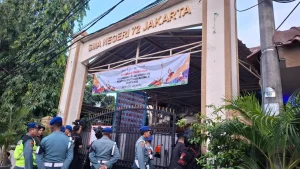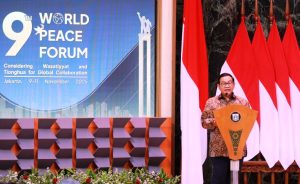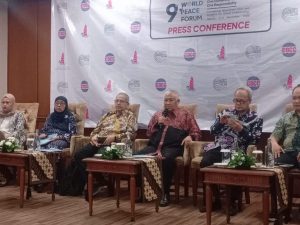Indonesia-is-likely-to-see-growth-accelerate-to-5.1-percent-in-2016-and-5.3-percent-in-2017-from-4.8-percent-in-2015.-300x201.jpg" alt="Indonesia is likely to see growth accelerate to 5.1 percent in 2016 and 5.3 percent in 2017, from 4.8 percent in 2015." width="300" height="201" /> Indonesia is likely to see growth accelerate to 5.1 percent in 2016 and 5.3 percent in 2017, from 4.8 percent in 2015.
Singapore , 04 Rajab 1437/11 April 2016 (MINA) – The World Bank has estimated that the regional growth will slow from 6.5% in 2015 to 6.3% this year and 6.2% in 2017 and 2018.
China’s economic slowdown will hit growth in developing East Asia and the Pacific from this year until at least 2018, the World Bank said on Monday, warning of volatile global markets and urging caution., FMT News reported as quoted by Mi’raj Islamic News Agency (MINA).
Regional growth is forecast to slow from 6.5% in 2015 to 6.3% this year and 6.2% in 2017 and 2018, the bank said in its latest outlook.
However, Southeast Asian economies led by Vietnam and the Philippines are still expected to see healthy expansion, with both forecast to see growth rates of more than 6.0%, it said.
Also Read: Saudi Arabia Wins Bid to Host World Expo 2030
The bank said the regional outlook reflected China’s gradual shift to slower, more sustainable growth, expected at 6.7% this year and 6.5% in 2017 and 2018, from 6.9% in 2015.
China is in the midst of reforms as it moves to make domestic consumption a key economic growth driver instead of exports and as manufacturing gives way to services taking on a bigger role in the economy.
“Continued implementation of reforms should support the continued rebalancing of domestic demand,” the report said on the Chinese economy.
“In particular, growth in investment and industrial output will moderate, reflecting measures to contain local government debt, reduce excess industrial capacity and reorient fiscal stimulus toward social sectors.”
Also Read: 148 Products from Indonesia Promoted at Sarawat Superstore Jeddah
Victoria Kwakwa, incoming World Bank East Asia and Pacific vice president, said in a statement that the region’s developing countries accounted for “almost two-fifths of global growth” last year.
“The region has benefited from careful macroeconomic policies, including efforts to boost domestic revenue in some commodity-exporting countries. But sustaining growth amid challenging global conditions will require continued progress on structural reforms,” she said.
Major drag
The forecasts were made against a backdrop of slowing world growth, weak global trade, low commodity prices and volatile financial markets, with China’s economic slowdown a major drag.
Excluding China, regional growth is projected to pick up from 4.7% last year to 4.8% this year and 4.9% in 2017 and 2018, powered by Southeast Asia’s robust economies, the bank said.
Also Read: Packaging Industry Supports Halal Ecosystem
East Asia and the Pacific under the World Bank covers China, Indonesia, Malaysia, the Philippines, Thailand, Vietnam, Cambodia, Laos, Myanmar, Mongolia, Fiji, Papua New Guinea, the Solomon Islands and East Timor.
“Among the large developing Southeast Asian economies, the Philippines and Vietnam have the strongest growth prospects, both expected to grow by more than 6.0% in 2016,” it said.
Indonesia is likely to see growth accelerate to 5.1 percent in 2016 and 5.3 percent in 2017, from 4.8 percent in 2015, despite low commodity prices and headwinds to external demand.
“However, this outlook is contingent on the implementation of an ambitious public investment programme, and the success of recent reforms to reduce red tape and uncertainty for private investors,” the bank said, regarding Indonesia.
Also Read: Indonesia-Japan Agree on Energy Transition Cooperation
Growth is expected to firm in the Philippines to 6.4 percent in 2016 from 5.8 percent in 2015, on the back of accelerated implementation of the existing pipeline of public-private partnership projects, and spending related to the May 2016 presidential election, the bank said. (T/R07/R01)
Mi’raj Islamic News Agency (MINA)
Also Read: Dubai Expo 2020 Holds Special Event for Palestine

































 Mina Indonesia
Mina Indonesia Mina Arabic
Mina Arabic